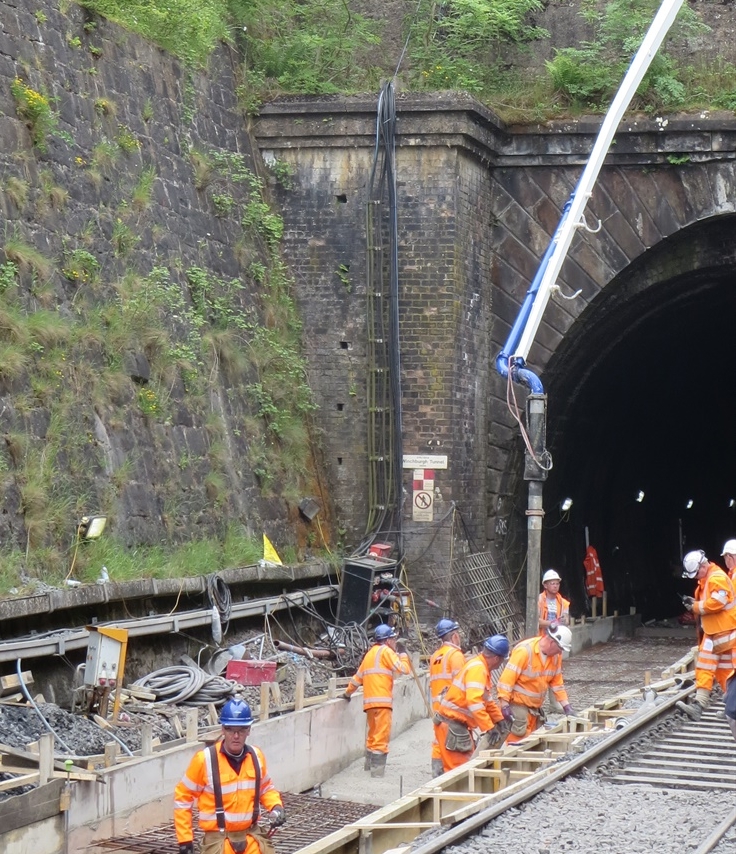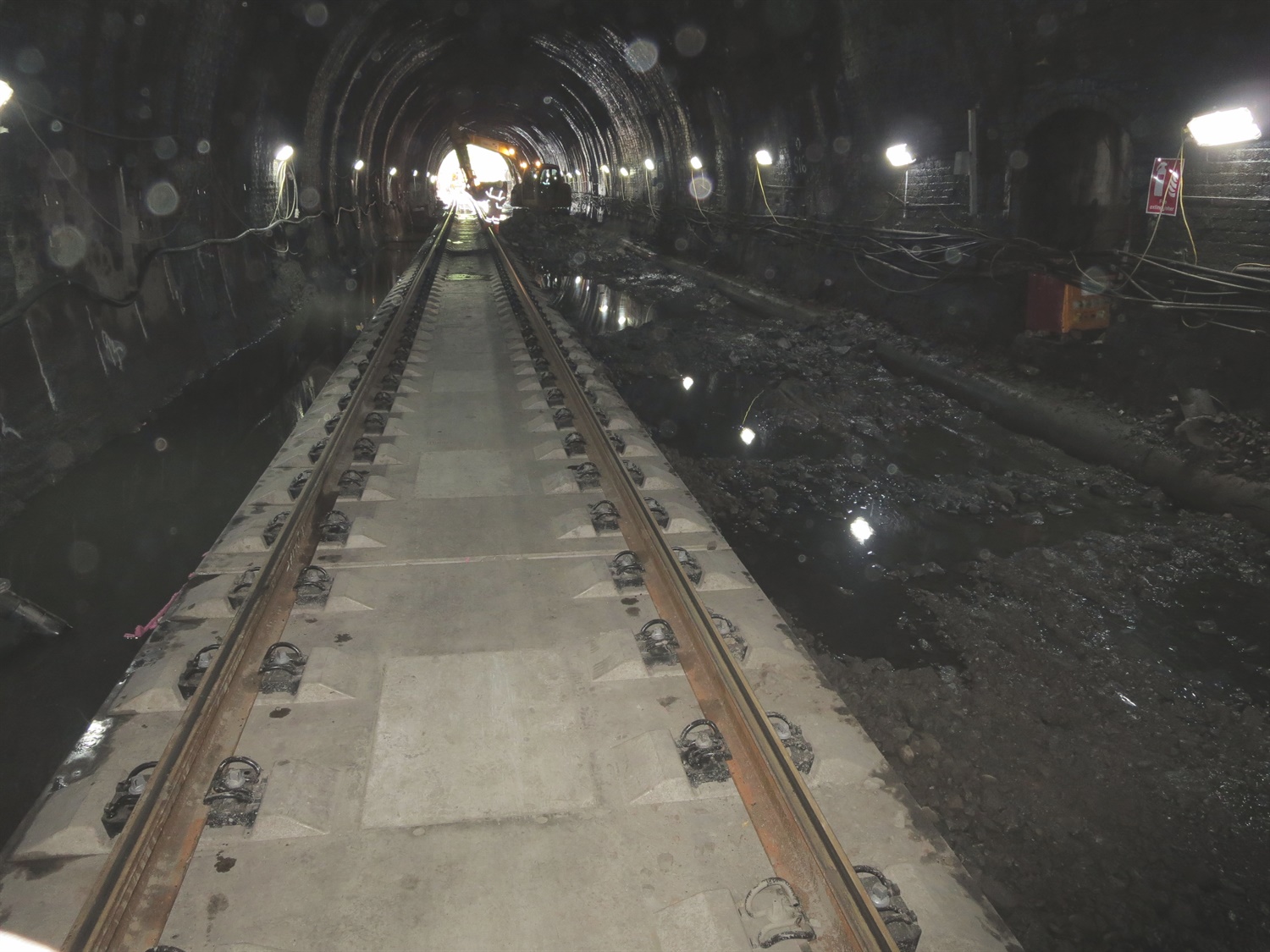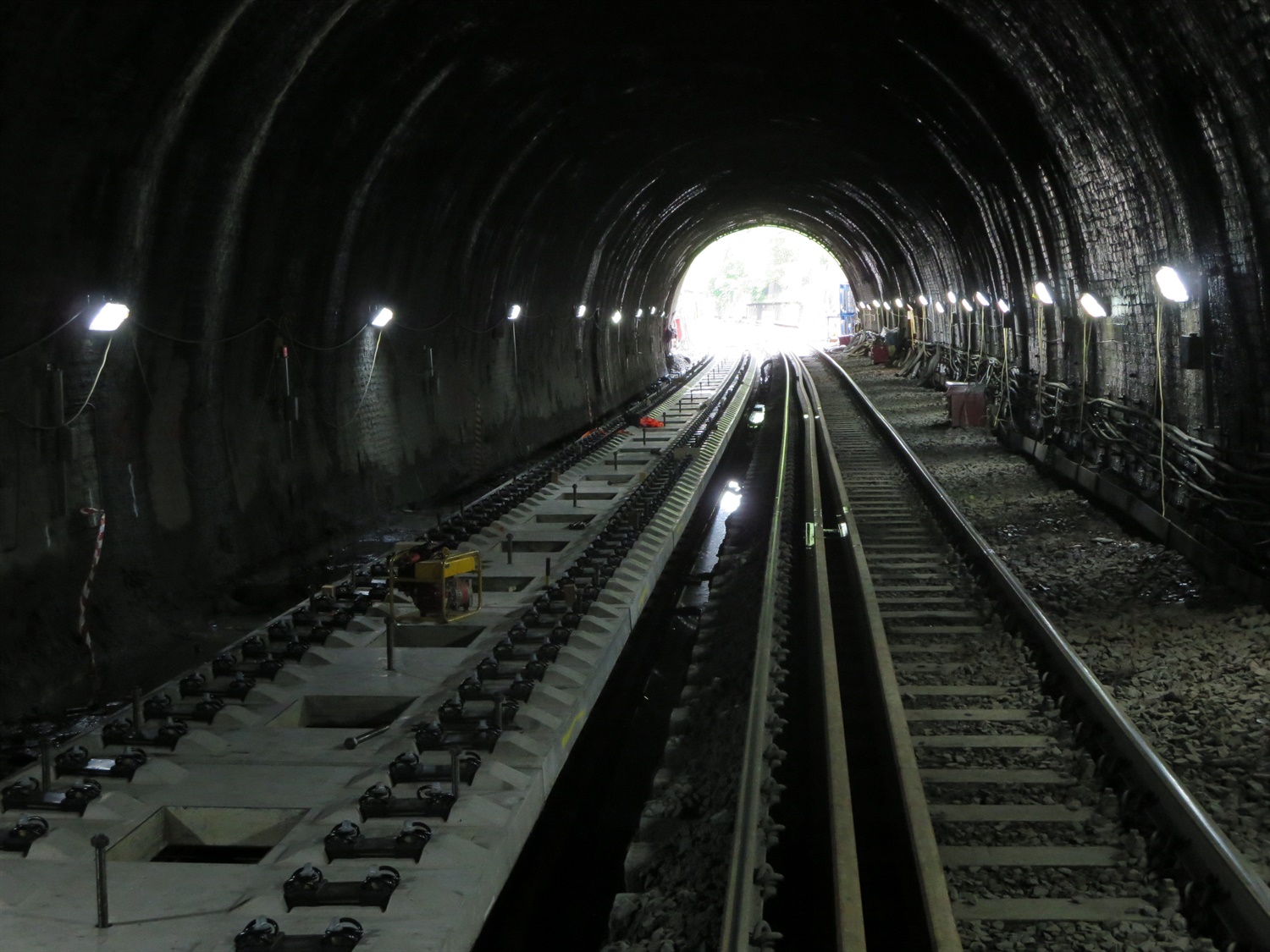01.08.15
Laying the way at Winchburgh
Source: RTM Aug/Sep 15
 Neil Barnes (pictured), rail director at Morgan Sindall, explains how upgrading the railway through Winchburgh Tunnel during a 44-day blockade will play a vital role in the electrification of the main Edinburgh-Glasgow Queen Street line.
Neil Barnes (pictured), rail director at Morgan Sindall, explains how upgrading the railway through Winchburgh Tunnel during a 44-day blockade will play a vital role in the electrification of the main Edinburgh-Glasgow Queen Street line.
Over the summer an army of engineers undertook a major 44-day blockade of work to upgrade the railway through Winchburgh Tunnel as part of the Scottish government-funded £742m Edinburgh Glasgow Improvement Programme (EGIP).
The EGIP programme, being delivered by Network Rail on behalf of the Scottish government, will electrify the Edinburgh-Glasgow Queen Street line by 2016 and is the most significant piece of engineering done on the railway since it was built in 1842.
Last year, Network Rail awarded an alliancing contract to deliver the core construction and electrification works on EGIP to Costain and Morgan Sindall.
The contract includes the complete route clearance works, including at Winchburgh Tunnel, rail infrastructure works at Glasgow Queen Street and Edinburgh Waverley stations and extensions to platforms at Croy, Falkirk High, Polmont and Linlithgow and all necessary works to electrify the route.
RTM caught up with Morgan Sindall’s rail director, Neil Barnes, to discuss how his team approached the seven-week blockade at Winchburgh Tunnel, which was carried out between 13 June to 27 July.
Speaking about the tunnel’s closure, which caused significant service alterations for many passengers using Glasgow-Falkirk High-Edinburgh and Dunblane/Stirling-Edinburgh lines, Barnes said: “Winchburgh was a highly technical element with a bigger project and programme behind it.
“For such an important and politically sensitive element of work it came down to a great deal of planning. We used Network Rail’s processes which are fairly standard from their perspective and the contractors that work for them.
“It was a rigorous process with a lot of collaboration between the different alliance parties – which included Costain, Babcock and Jacobs – in getting ourselves to a position where we were happy to go ahead with the work. On the ground, we did some elements of preparatory work to allow the construction. This included temporary lighting, ventilation and setting up drainage systems – as there was issues of ground water.”

The main aim of the £17m works at Winchburgh included lowering and laying a new slab track trackbed through the 330m-long tunnel and installing initially, the fixings for a Furrer+Frey rigid overhead conductor rail system, rather than a catenary system, to enable electrification of the line.
However, the engineering team experienced a number of challenges once they got into the tunnel where they planned to lower the line by up to 200mm.
“This is where we had to deal with the natural elements. The ground conditions weren’t exactly as we’d expected it in a lot of places,” said Barnes. “We were going through variable ground. So we had areas of two types of rock. There was dolerite, which is a hard rock, and interspersed within that areas of mudstone.”

He added that over a long period of time the area in and around the tunnel had been heavily quarried, with a naturally-formed lagoon quite close to the site.
“At times that tunnel becomes a river, so we knew it was going to be wet and we knew we were going to have to cut through rock,” said Barnes. The biggest challenge was the variability of the mudstone, which became weaker when water came into contact with it.
“Due to this, in some places we had to over dig to get through poor mudstone to a satisfactory formation, we then had to refill this with additional concrete,” Barnes added.
RTM was told the team excavated 50% more material than expected, and over 2,000 tonnes of foundation concrete was poured during the blockade. Steel dowels were also fixed into the base rock to secure the concrete base slabs of the track bed to the formation.
The team also put a new ‘upsized’ drainage system in the tunnel, installed at invert level next to the base slabs. “The key element is that we have got the water to fall from one end to the other,” said Barnes. “It didn’t before.”
Slab track
To ensure the OLE clearance is maintained in the tunnel the track had to be fixed in position, which is why Morgan Sindall, as the principal contractor, opted to install the ÖBB- PORR Austrian slab track system – the first time this system has been used on a major project in the UK.
“From a technical perspective, through the tunnel for the electrification we have a rigid conductor rail system – which runs along the roof,” said Barnes. “So you have a fixed point. That means within the track system and, therefore, where the train sits, you need to have three-dimensional fixity.
“You can’t have a position where the track is likely to move either under the load of the train as it passes or as a consequence of ground movements – albeit they would be minor – going forwards.”
During the work more than 940m of slab track was laid with a total of 190 sections of pre-cast slab base plates installed – 95 in each direction.
In order to secure the slab track into place onto the base concrete, HOPEFlow ‘Rail’ was used. Developed by Hope Construction Materials the product is a high-performance, self-compacting concrete, which uses a blend of selected aggregates, cement and specialist admixtures.
Barnes added that the team essentially built the track in two halves, with the Up line being the first track to be lifted.

“We excavated one side, using the existing track as access to get us in and out,” he said. “We then flipped over to get access through the other side. We had two very distinct halves and in-between those halves we were able to learn and change. Firstly, we understood we were going to have ground problems so we were better able to deal with that issue on the second side.”
Over the course of the 44-day blockade, the project partners opted to deliver the work in three eight-hour shifts each day.
“There were around 60 individuals involved in every shift; 180 people working over the course of a day,” said Barnes. “That also meant we had to have a high-quality welfare set up in place, especially as we had guys working in the wet and dark, and had to make sure they could get their gear dried and cleaned for the next shift. It was a fairly large logistical issue, but it worked quite well.”
Barnes explained that the partners very quickly dismissed the option of using two 12-hr shift patterns, as in order to stay in line with Network Rail’s recommendation that staff should not have a combined work and travel time of more than 14 hours “it was not appropriate”.
“It was a little bit more expensive but it was far better with regards to management of fatigue,” said Barnes. “You do need more men but, again, you are getting guys that are fresh coming in on sensible work shifts so we could be even more efficient.”
Discussing the alliance method of working, Barnes added it simplifies ‘the command and control’ process. And because the alliance management team has representatives from all the different contractors on it, “you don’t get a delay over the decision making process” and “it takes out a lot of lost management time in negotiations and smooths the way”.